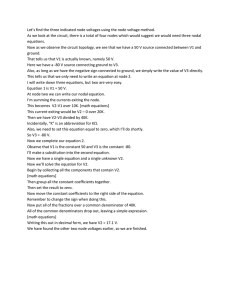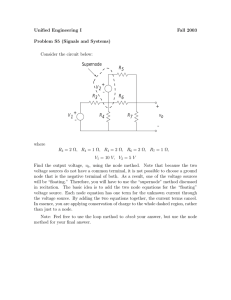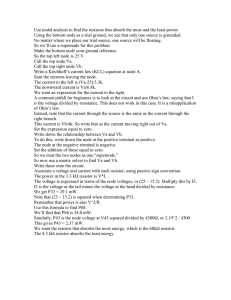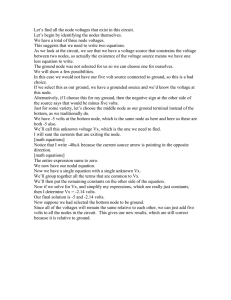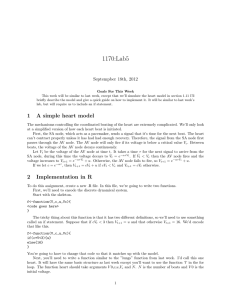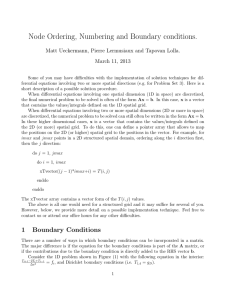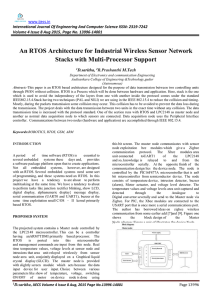This is a nodal analysis problem.
advertisement
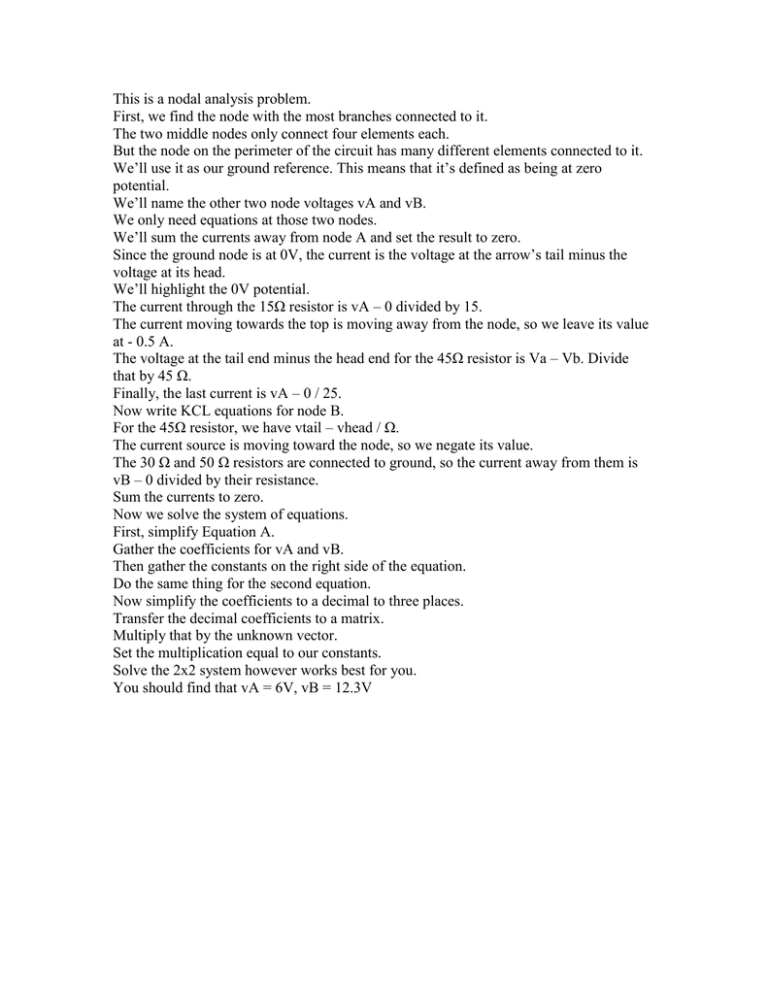
This is a nodal analysis problem. First, we find the node with the most branches connected to it. The two middle nodes only connect four elements each. But the node on the perimeter of the circuit has many different elements connected to it. We’ll use it as our ground reference. This means that it’s defined as being at zero potential. We’ll name the other two node voltages vA and vB. We only need equations at those two nodes. We’ll sum the currents away from node A and set the result to zero. Since the ground node is at 0V, the current is the voltage at the arrow’s tail minus the voltage at its head. We’ll highlight the 0V potential. The current through the 15Ω resistor is vA – 0 divided by 15. The current moving towards the top is moving away from the node, so we leave its value at - 0.5 A. The voltage at the tail end minus the head end for the 45Ω resistor is Va – Vb. Divide that by 45 Ω. Finally, the last current is vA – 0 / 25. Now write KCL equations for node B. For the 45Ω resistor, we have vtail – vhead / Ω. The current source is moving toward the node, so we negate its value. The 30 Ω and 50 Ω resistors are connected to ground, so the current away from them is vB – 0 divided by their resistance. Sum the currents to zero. Now we solve the system of equations. First, simplify Equation A. Gather the coefficients for vA and vB. Then gather the constants on the right side of the equation. Do the same thing for the second equation. Now simplify the coefficients to a decimal to three places. Transfer the decimal coefficients to a matrix. Multiply that by the unknown vector. Set the multiplication equal to our constants. Solve the 2x2 system however works best for you. You should find that vA = 6V, vB = 12.3V
